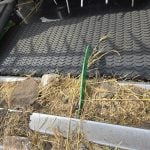India is attempting to build on the momentum from last year’s record pulse harvest by providing handsome subsidies for farmers planting those crops this summer.
India’s Cabinet Committee on Economic Affairs has approved minimum support prices for 2011-12 kharif crops, and the biggest increases are for the three main pulses grown during the summer months.
Support prices for pigeon peas are up 30 percent, while those for mung beans and black matpe rose 15 percent. Support prices for soybeans, paddy rice and corn increased by only four to five percent.
Read Also

China’s grain imports have slumped big-time
China purchased just over 20 million tonnes of wheat, corn, barley and sorghum last year, that is well below the 60 million tonnes purchased in 2021-22.
“They are putting pulses a little more on the front burner than they have over the last 10 years,” said Mercantile Consulting Venture analyst Marlene Boersch.
“What they’re trying to do, quite apparently, is to encourage the pigeon pea acreage.”
The policy could spell trouble for Canadian lentil growers if growing conditions co-operate. India was the largest buyer of Canadian lentils in 2009-10, importing 283,995 tonnes.
It was an exceptional year for sales because of attractive lentil prices and a Saskatchewan Pulse Growers market development initiative that showed Canadian green lentils make a good substitute for Indian pigeon peas.
Lentil exports to India have tailed off in 2010-11. Sales through the first seven months of the marketing campaign
INDIA IMPORTED
are 72,259 tonnes, compared to 211,265 tonnes in the same period last year.
However, India still ranks as the second biggest buyer of the 2010 crop.
Boersch said looking at support prices can be deceiving because pulse yields haven’t increased as rapidly as corn, soybeans and rice.
She finds it more useful to calculate returns per acre for the 16 kharif crops that receive minimum support prices. Using average national yields, Boersch has determined that pigeon peas would deliver the second best gross return for Indian growers. Only groundnuts were better.
“It’s the first time they’re actually that highly ranked,” she said.
Mung beans and black matpe didn’t fare as well, ranking 10th and 12th, respectively.
Pigeon peas are the largest kharif season pulse crop, accounting for 45 percent of the estimated 2010-11 production.
While increased pigeon pea acre-a ge could hurt Canadian lentil exports, it is not expected to have the same impact on the world’s cheapest pulse crop.
“Our pea exports this year will be more determined by supply rather than what the demand is because I perceive there is going to be a tight supply picture going forward worldwide,” said Boersch.
India’s monsoon rains have arrived on time. Rainfall during the first week of the monsoon season, which runs from June through September, was 17 percent above normal. The India Meteorological Department is forecasting a normal monsoon to nourish the kharif crops.
A good kharif harvest would build on a solid 2010-11 campaign. Government officials are now forecasting 18 million tonnes of combined kharif and rabi pulse production, exceeding any annual pulse output from the last decade by three million tonnes.















